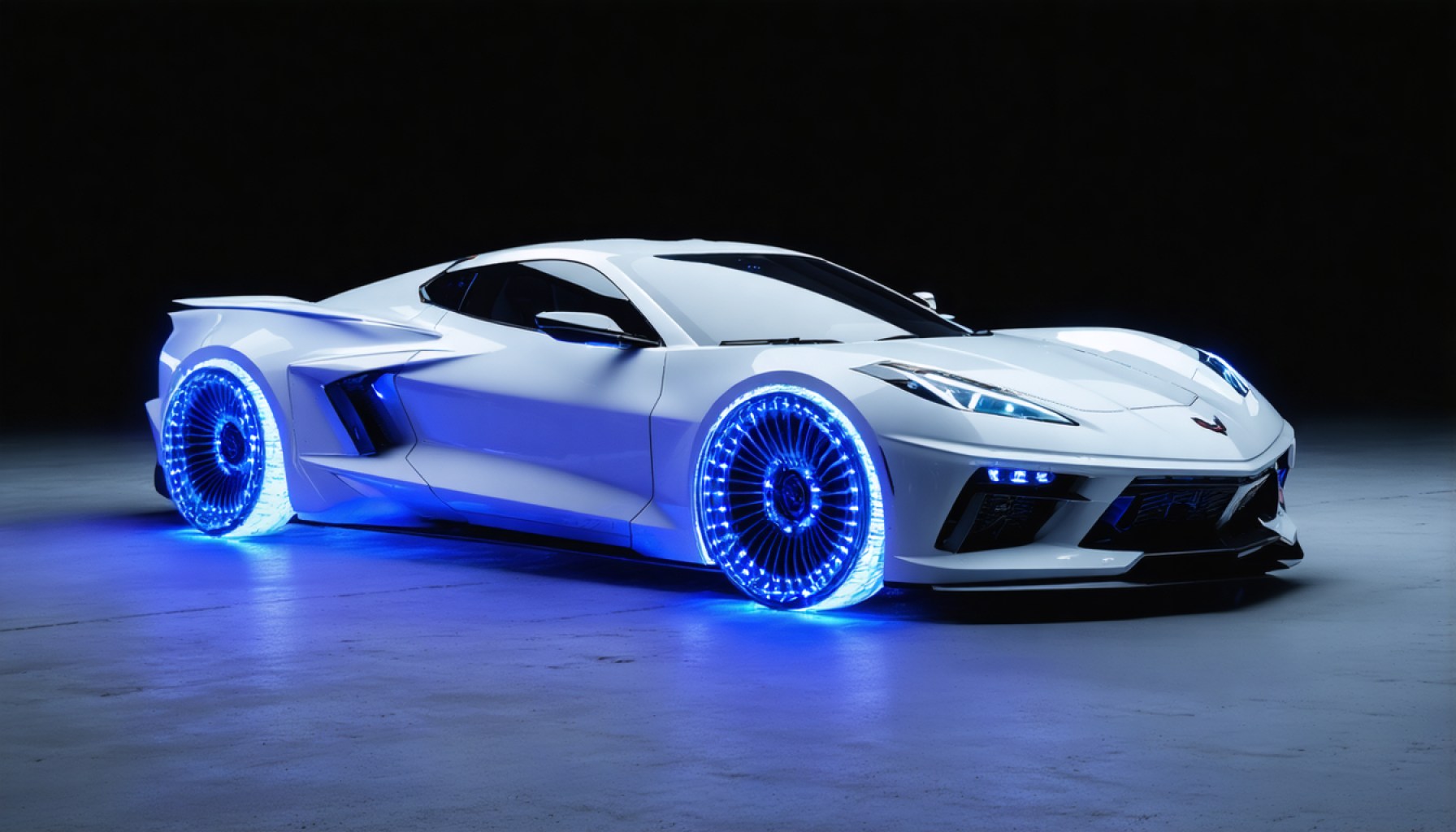- General Motors unveiled an all-electric Chevrolet Corvette concept, signaling a bold futuristic vision.
- This move marks GM’s strategic re-entry into the European market, after exiting in 2017.
- The concept car features a cutting-edge design, merging legacy elements like the 1963 Sting Ray’s split-window with innovative aesthetics.
- The unveiling emphasizes a shift towards electrification, with further Corvette concepts planned through 2025.
- While not slated for immediate production, the car serves as a “design study” to gauge public interest and showcase GM’s innovation.
- GM’s electric Corvette is a significant step in redefining high-performance vehicles for a sustainable future.
In a surprising move, General Motors has unleashed a futuristic vision of their iconic Chevrolet Corvette, capturing global attention with an all-electric concept that promises to shake up automotive norms. This audacious step came during the grand unveiling of GM’s new design studio in the U.K., marking a strategic re-entry into the European market.
From afar, this concept car seems as if it’s been plucked from the set of a science fiction movie, with its cutting-edge design drawing parallels to a high-performance IMSA race car rather than the classic Americana of its predecessors. Yet, fans of the Corvette lineage will find familiar echoes in its structure, most notably the distinctive split-window homage to the legendary 1963 Sting Ray. The design is not merely a tribute to the past—it’s a deliberate fusion of legacy and innovation.
GM’s strategic choice of unveiling this electric cerebration in England underscores their renewed vigor in penetrating the European market, which they exited in 2017 after selling Opel to PSA Groupe, now Stellantis. As international trade tensions simmer, GM’s bold declaration of intent signifies not just a geographical expansion but a pivotal technological evolution. Embracing electrification, their collaboration of global design studios—spanning Detroit, Los Angeles, Shanghai, and Seoul—will birth further Corvette concepts through 2025, hinting at an exhilarating future lineup.
The unveil, however, is not about immediate mass production. Serving as a “design study,” this concept car stands as a testament to GM’s innovative prowess and as a beacon for potential future developments. The company’s focus on design subliminally probes public interest and preferences, while also signaling their readiness to embrace electric performance in a car that has historically thrived on raw, combustible power.
In an era where the automotive industry is poised at the cusp of transformation, GM’s electric Corvette concept is a clarion call. It’s an invitation to the automotive community to look beyond the gasoline fever of yesteryears, to forge a path where speed aligns with sustainability. As the world’s eyes zero in on this electrified marvel, the key takeaway is clear: the future of high-performance vehicles is not just about leading the race—it’s about redefining it.
Electrifying the Automotive Future: Inside GM’s Bold New Corvette Concept
GM’s unveiling of an all-electric Chevrolet Corvette concept is a landmark moment for this iconic sports car. With its futuristic design and strategic reveal in the U.K., GM signals a pivotal shift in both technology and market strategy. This move not only highlights a significant step in the electrification of sports cars but also marks GM’s renewed focus on the European market, which they exited in 2017.
Key Features and Design Highlights
1. Futuristic Design Inspired by History:
– The electric Corvette concept showcases a design reminiscent of high-performance IMSA race cars.
– Its split-window echoes the 1963 Corvette Sting Ray, symbolizing the fusion of legacy with innovation.
2. Strategic Global Collaboration:
– GM’s global design studios in Detroit, Los Angeles, Shanghai, and Seoul contributed to the electric Corvette.
– This collaboration emphasizes GM’s commitment to merging diverse global perspectives in automotive design.
3. Not Just a Showpiece:
– While the concept is not immediately destined for mass production, it serves as an exploratory design study.
– This approach allows GM to gauge public interest and potential market preferences for future iterations.
Industry Trends and Market Implications
– Electric Vehicle (EV) Revolution: As the automotive industry pivots towards sustainability, GM’s electric Corvette is a clear indication of the company’s alignment with the EV movement.
– Re-entry into the European Market: By unveiling in the U.K., GM aims to reestablish itself in Europe, focusing on markets where EV demand is growing.
– Sustainability Focus: This concept car aligns with global pushes towards reducing carbon footprints and embracing renewable energy sources.
Potential Challenges and Considerations
– Market Reception: Shifting Corvette’s identity from raw combustion power to electric may face resistance from traditional enthusiasts.
– Technological Hurdles: Scaling electric sports car technology to meet the performance and excitement expected from a Corvette presents engineering challenges.
– Competition: The sports EV market is becoming increasingly competitive with players like Tesla Roadster and Porsche Taycan leading the charge.
Expert Opinions and Predictions
– Industry experts predict a bright future for sports EVs, with innovations focusing on extending range, improving charging infrastructure, and enhancing performance.
– The move towards electrification, led by iconic brands like GM, suggests a broader acceptance of electric technology across performance sectors.
Recommendations for Enthusiasts and Car Buyers
– Stay Informed: Follow updates from GM and other manufacturers about developments in sports EVs.
– Test Drive: Experience the handling and performance of current electric sports models to understand their potential.
– Consider Environmental Impact: Factor in sustainability when deciding on future vehicle purchases, as the industry increasingly prioritizes eco-friendliness.
Exploring GM’s electric Corvette concept invites fans to envision a future where performance meets environmental responsibility. For more about GM’s innovations and initiatives, visit the General Motors website.









